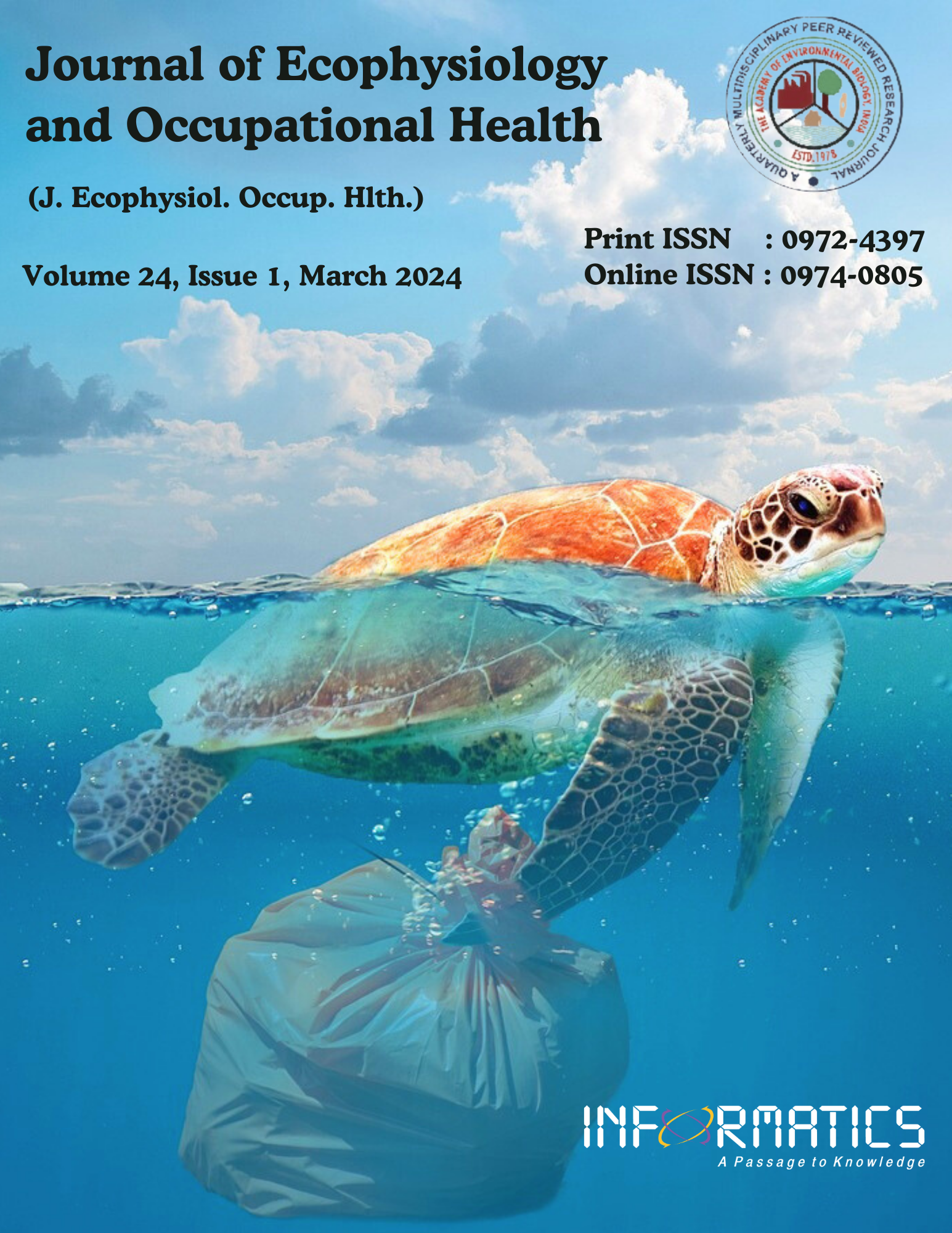Exploring Effects of Modified Trampoline Training v/s Proprioceptive Training on Balance in Cancer Patients with Chemotherapy-Induced Peripheral Neuropathy: Randomized Controlled Trial
DOI:
https://doi.org/10.18311/jeoh/2024/35675Keywords:
Cancer, Chemotherapy, Proprioception, Peripheral Neuropathy, Trampoline TrainingAbstract
Context: Chemotherapy Treatment-Induced Peripheral Neuropathy (CIPN), is a significant side effect of anti-neoplastic treatment faced by cancer patients. CIPN results in sensory-motor deficiencies, altered proprioceptive signals, and poor posture control, increasing the risk of fall. Modified trampoline training is a recent rehabilitation method that can stimulate proprioception. However, its effects in cancer patients with CIN remain unexplored. The study’s objective was to examine and compare the effects of Modified Trampoline Training (MTT) and Conventional Proprioception Training (CPT) on balance in cancer patients with CIPN. Study Designs and Settings: This randomized controlled trial was conducted in the tertiary care center, Miraj. Methods: The study included male and female patients aged between 41-60 years, suffering from colorectal cancer who are receiving or have received chemotherapy and were experiencing the symptoms of CIPN. A total of 26 patients were divided into two equal groups. Group A received MTT and Group B received CPT for 3 days/week for 4 weeks. The outcome measure was balance which was assessed using the Berg Balance Scale (BBS) and Timed Upand- Go test (TUG). Statistical analysis: The data was analyzed using paired and independent t-tests for within and between groups respectively. Results: Within-group analysis showed statistically significant improvement in all the outcomes for both groups (p<0.01). Between groups, the analysis revealed that the MTT group showed better improvement for BSS (p<0.0) and TUG (p = 0.01) than the control group. Conclusion: The study concluded that MTT is more effective than CPT in improving balance in cancer patients with CIPN.
Downloads
Metrics
Downloads
Published
How to Cite
Issue
Section
License
Copyright (c) 2024 Manal Anthikat, Pruthvika Holmukhe, Sneha Katke, Rutuja Phadke, Sachin Shetti, Harshada Patil, Prashant Naik

This work is licensed under a Creative Commons Attribution 4.0 International License.
Accepted 2024-01-02
Published 2024-03-04
References
Cardoso AC, Araújo DD, Chianca TC. Risk prediction and impaired tactile sensory perception among cancer patients during chemotherapy 1. Revista Latino-Americana de Enfermagem. 2018; 25. https://doi.org/10.1590/1518- 8345.1979.2957 DOI: https://doi.org/10.1590/1518-8345.1979.2957
Siegel RL, Miller KD, Goding Sauer A, Fedewa SA, Butterly LF, Anderson JC, Cercek A, Smith RA, Jemal A. Colorectal cancer statistics, 2020. CA: A Cancer Journal for Clinicians. 2020; 70(3):145-64. https://doi.org/10.3322/caac.21601 DOI: https://doi.org/10.3322/caac.21601
Amptoulach S, Tsavaris N. Neurotoxicity caused by the treatment with platinum analogues. Chemotherapy Research and Practice. 2011; 2011. https://doi. org/10.1155/2011/843019 DOI: https://doi.org/10.1155/2011/843019
Zajączkowska R, Kocot-Kępska M, Leppert W, Wrzosek A, Mika J, Wordliczek J. Mechanisms of chemotherapyinduced peripheral neuropathy. International Journal of Molecular Sciences. 2019; 20(6):1451. https://doi. org/10.3390/ijms20061451 DOI: https://doi.org/10.3390/ijms20061451
Seretny M, Currie GL, Sena ES, Ramnarine S, Grant R, MacLeod MR, Colvin LA, Fallon M. Incidence, prevalence, and predictors of chemotherapy-induced peripheral neuropathy: A systematic review and meta-analysis. Pain®. 2014; 155(12):2461-70. https://doi.org/10.1016/j. pain.2014.09.020 DOI: https://doi.org/10.1016/j.pain.2014.09.020
Quasthoff S, Hartung HP. Chemotherapy-induced peripheral neuropathy. Journal of Neurology. 2002; 249:9- 17. https://doi.org/10.1007/PL00007853 DOI: https://doi.org/10.1007/PL00007853
Marshall TF, Zipp GP, Battaglia F, Moss R, Bryan S. Chemotherapy-induced-peripheral neuropathy, gait and fall risk in older adults following cancer treatment. Journal of Cancer Research and Practice. 2017; 4(4):134-8. https:// doi.org/10.1016/j.jcrpr.2017.03.005 DOI: https://doi.org/10.1016/j.jcrpr.2017.03.005
Mendoza TR, Wang XS, Williams LA, Shi Q, Vichaya EG, Dougherty PM, Thomas SK, Yucel E, Bastida CC, Woodruff JF, Cleeland CS. Measuring therapy-induced peripheral neuropathy: Preliminary development and validation of the treatment-induced neuropathy assessment scale. The Journal of Pain. 2015; 16(10):1032-43. https://doi. org/10.1016/j.jpain.2015.07.002 DOI: https://doi.org/10.1016/j.jpain.2015.07.002
Kolb NA, Smith AG, Singleton JR, Beck SL, Stoddard GJ, Brown S, Mooney K. The association of chemotherapyinduced peripheral neuropathy symptoms and the risk of falling. JAMA Neurology. 2016; 73(7):860-6. https://doi. org/10.1001/jamaneurol.2016.0383 DOI: https://doi.org/10.1001/jamaneurol.2016.0383
Postma TJ, Heimans JJ. Grading of chemotherapy induced peripheral neuropathy. Annals of Oncology. 2000; 11(5):509-14. https://doi.org/10.1023/A:1008345613594 DOI: https://doi.org/10.1023/A:1008345613594
Streckmann F, Zopf EM, Lehmann HC, May K, Rizza J, Zimmer P, Gollhofer A, Bloch W, Baumann FT. Exercise intervention studies in patients with peripheral neuropathy: a systematic review. Sports Medicine. 2014; 44:1289-304. https://doi.org/10.1007/s40279-014-0207-5 DOI: https://doi.org/10.1007/s40279-014-0207-5
Fernandes J, Kumar S. Effect of lower limb closed kinematic chain exercises on balance in patients with chemotherapy induced peripheral neuropathy: a pilot study. International Journal of Rehabilitation Research. 2016; 39(4):368-71. https://doi.org/10.1097/MRR.0000000000000196 DOI: https://doi.org/10.1097/MRR.0000000000000196
Kanchanasamut W, Pensri P. Effects of weight-bearing exercise on a mini-trampoline on foot mobility, plantar pressure and sensation of diabetic neuropathic feet; a preliminary study. Diabetic Foot and Ankle. 2017; 8(1):1287239. https://doi.org/10.1080/20006 25X.2017.1287239 DOI: https://doi.org/10.1080/2000625X.2017.1287239
Hahn J, Shin S, Lee W. The effect of modified trampoline training on balance, gait, and fall efficacy of stroke patients. Journal of Physical Therapy Science. 2015; 27(11):3351-4. https://doi.org/10.1589/jpts.27.3351 DOI: https://doi.org/10.1589/jpts.27.3351
Kaur J, Singh A, Grewal S. A comparative study on different surface balance training on dynamic postural control in collegiate female athletes. Journal of Novel Physiotherapy and Physical Rehabilitation. 2020; 7(1):036-42. https://doi. org/10.17352/2455-5487.000076 DOI: https://doi.org/10.17352/2455-5487.000076
Aman JE, Elangovan N, Yeh IL, Konczak J. The effectiveness of proprioceptive training for improving motor function: A systematic review. Frontiers in Human Neuroscience. 2015; 8:1075. https://doi.org/10.3389/fnhum.2014.01075 DOI: https://doi.org/10.3389/fnhum.2014.01075
O’Sullivan SB, Schmitz TJ, Fulk GD. Physical rehabilitation. 6th ed. Philadelphia: F.A. Davis Co; 2014.
Podsiadlo D, Richardson S. The timed “Up and Go”: A test of basic functional mobility for frail elderly persons. Journal of the American Geriatrics Society. 1991; 39(2):142-8. https://doi.org/10.1111/j.1532-5415.1991.tb01616.x DOI: https://doi.org/10.1111/j.1532-5415.1991.tb01616.x
. Purves D, Augustine GJ, Fitzpatrick D, Katz LC, LaMantia AS, McNamara JO, et al. Mechanoreceptors specialized to receive tactile information. In: Neuroscience 2nd edition [Internet]. Sinauer Associates; 2001. https://www.ncbi.nlm. nih.gov/books/NBK10895/
Ahmad I, Verma S, Noohu MM, Shareef MY, Hussain ME. Sensorimotor and gait training improves proprioception, nerve function, and muscular activation in patients with diabetic peripheral neuropathy: A randomized control trial. Journal of Musculoskeletal and Neuronal Interactions. 2020; 20(2):234.
 Manal Anthikat
Manal Anthikat








